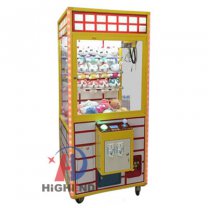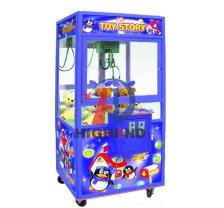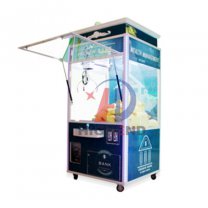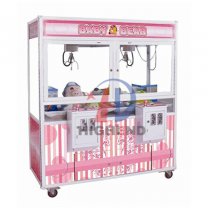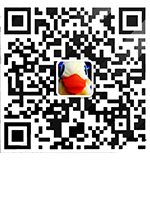There are three roads in the unmanned Supermarket: the best
Source:未知 Popularity:Time:2018-02-06
The unmanned supermarket to "kill the cashier" has become the hottest tuyere.
There are four major forces to enter, the first big power, the ecommerce of the subversive role, and the line of war, such as Amazon, Ali and so on. The second power, the traditional business super active evolution, such as WAL-MART, Hualian and so on. The third force is the empowerment, such as helping the offline merchants to kill the cashiers, such as the Mars rabbit, etc., by transforming the traditional business super market to transform the stock market. The fourth is that the independent unmanned unmanned convenience stores, such as Benko box etc..
The four force actually takes three paths, namely, the revolutionary subversive route represented by Amazon, the evolutionary path represented by WAL-MART, and the third parties, such as "Mars rabbit".
Subversion of VS to improve vs
The Amazon Go: is completely unmanned, the image technology is not mature, the cost is high, the landing is difficult, and it stays in the internal test stage.
In December 5, 2016, Amazon launched an unmanned Amazon Go, which is still in the "internal test" stage, open only to Amazon employees.
1, user experience: the process is simple, no checkout, that is to buy and go.
Consumers are entering Amazon Go shopping, requiring an Amazon account and downloading app. At the entrance, the customer will recognize the face and confirm the identity of the user. When consumers stop and choose goods in front of the shelves, the camera will judge whether the customers put the goods in the shopping basket by buying images or gesture recognition, or just looking and putting them back to the original place.
2, the principle of Technology: Based on machine vision, depth learning algorithm and sensor fusion technology.
Through the infrared sensor, the shelf pressure induction device (to confirm what goods had been removed) and load sensor (for recording what goods are put back), scan and record the consumers to purchase goods, information real-time transmission to the central Amazon Go, then the customer settlement automatically in the Amazon account, users completed directly from shop.
3, the technology is not yet mature, there are still a lot of bug.
For example, when goods are not in line with their original position, Amazon Go is often unable to identify the goods at this time.
In addition, according to foreign media reports, once the purchase of more than 20 people, it is difficult to buy Amazon Go tracking users and on hand merchandise, so the test environment this technology now can only accommodate a small number of users, or require the user to slow down the speed, this may be the reason why Amazon Go delayed promotion plan.
4, applicability. Internal test for the internal staff of Amazon. In the future, as it is necessary to use the Amazon account settlement account in a unified way, it is conceivable that the main service of the offline store is also the original online user of Amazon.
5, landing, high cost.
Amazon has set up costs to reveal its stores, but it is inferred that the cost of Amazon Go is expensive, and the cost of a store is likely to be up to tens of millions of dollars.
The technology is not mature and the cost is high. It may be the reason that Amazon Go still stays at the stage of the concept store, which is difficult to be extended.
WAL-MART Scan&Go: self-service shopping, without the need for smart phones, no need to queue, no registration, a variety of settlement methods
WAL-MART's Scan&Go project, which landed at the earliest in 2013, is now landing in a number of stores in the United States. Compared with the concept of Amazon Go, Scan&Go is more grounded, and the landing is faster.
1, from the perspective of user experience, Scan&Go provides a variety of ways of settlement. In addition to the traditional checkout time, whether smart phone is available or not, it can achieve Scan&Go (scan away) and save the trouble of queuing.
Smartphones scan barcodes and pay for mobile phones; without smart phones, handheld scanners, cards, and cash can be used.
2, from the perspective of applicability, WAL-MART's diversified "queuing free scheme" fully considers the diverse shopping habits of different users, and is more feasible.
At present, more than a dozen WAL-MART stores in Texas, Florida and other places are deploying this technology. More than half of WAL-MART customers have used at least one Scan&Go system.
3, the complete realization of "unmanned", in addition to the Amazon image recognition technology, there are RFID technology.
For example, Rosen (Lawson), the world's second largest convenience store group, is working with Panasonic to experiment in a pilot unmanned shop in Japan. As long as customers put items in special shopping baskets, the built-in scanner of the shopping basket will automatically read the electronic tags on the items. When they check out, they will automatically slide into plastic bags when they are placed on the automated counter. To be sure, the RFID tag plays an important role in this system.
However, at present, Rosen's concept shop has not been promoted at home. On the contrary, Rosen's unmanned retail store in China has three main outlets: the Mars rabbit app, the WeChat public number and Rosen's app.
The RFID technology that came to face in the 80s of last century has not become the mainstream of the unmanned supermarket, the reason is the cost. The RFID code must be a code, a one-time use, each cost two or three cents, plus labor costs posted a note, count down to three or four hair, and supermarket mineral water, a box of 12 bottles of the supermarket profit is two or three dollars, one or two cents per bottle is allocated to profit, to cover the cost of RFID.
Therefore, it is suitable for RFID technology, hypermarkets, such as Metro packaging, high price is not suitable for daily supermarket, convenience stores and small supermarket packaging.
In addition, RFID tags may not be able to identify items such as glass or other special materials, or the labels are pinched and can not be identified.
Mars rabbit: low cost of transformation
Rankings of similar articles
- The vending machine for sex products has a strong a
- The vending machine will break out in the Chinese m
- There are three roads in the unmanned Supermarket:
- The working principle and payment method of the ven
- The daily maintenance of the vending machine should
- Business model of intelligent vending machine
- Three common methods of payment for vending machine
- Vending machine solution
Latest information articles
- The vending machine will break out in the Chinese m
- There are three roads in the unmanned Supermarket:
- The vending machine for sex products has a strong a
- Business model of intelligent vending machine
- The daily maintenance of the vending machine should
- Three common methods of payment for vending machine
- Vending machine solution
- The working principle and payment method of the ven

